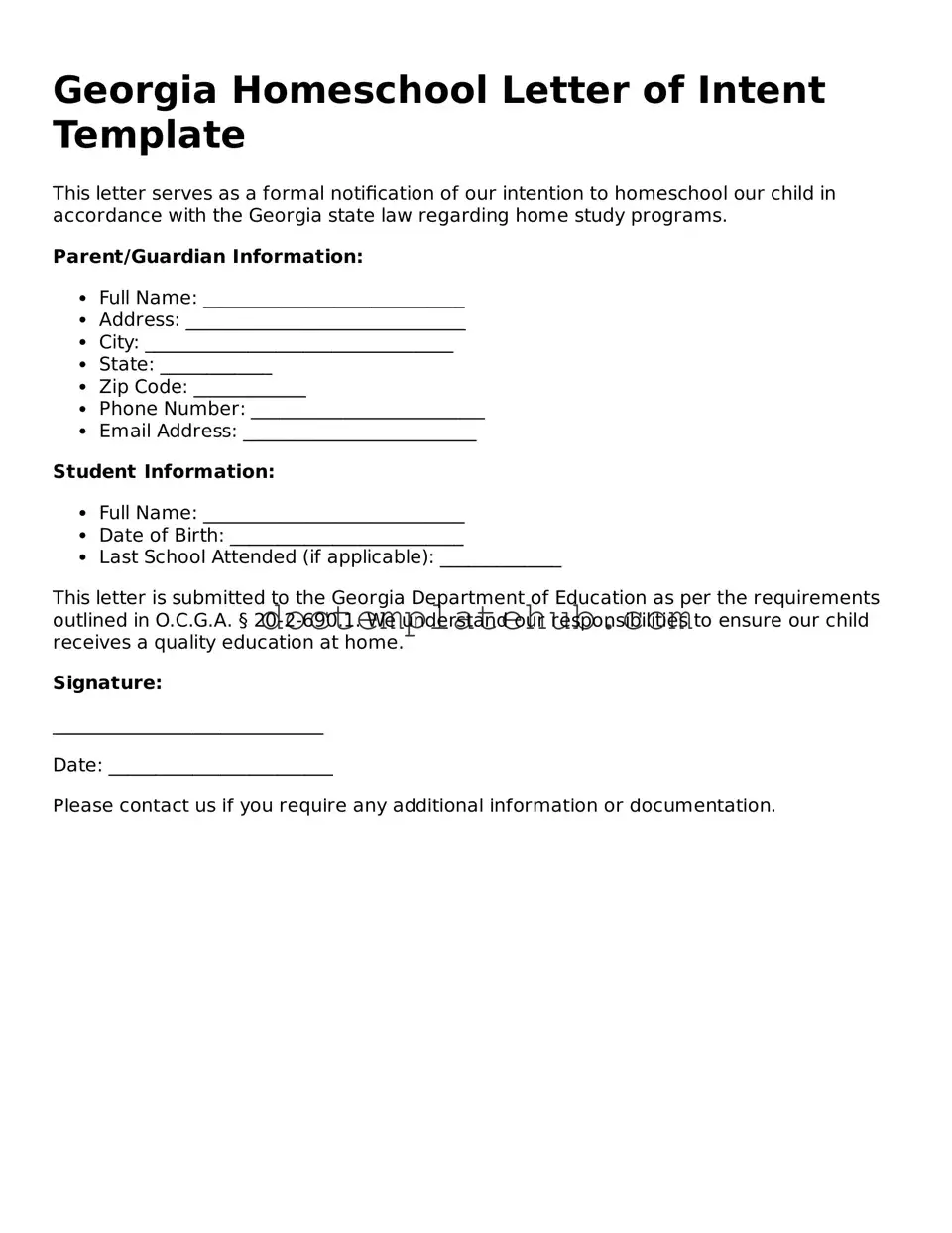What is the Georgia Homeschool Letter of Intent form?
The Georgia Homeschool Letter of Intent form is a document that parents or guardians must submit to notify their local school district of their intention to homeschool their child. This form serves as a formal declaration that the family will be providing educational instruction outside of the traditional public or private school system.
Who needs to submit the Letter of Intent?
Parents or guardians of children who are being homeschooled in Georgia must submit the Letter of Intent. This requirement applies to children who are between the ages of six and sixteen. It is crucial to file this form to comply with state regulations regarding homeschooling.
When should the Letter of Intent be submitted?
The Letter of Intent must be submitted within 30 days of beginning the homeschooling process. If a child is already enrolled in a public or private school, the form should be submitted before withdrawing the child from that institution. Timely submission helps ensure compliance with state homeschooling laws.
What information is required on the Letter of Intent?
The Letter of Intent typically requires basic information such as the names and ages of the children being homeschooled, the name and address of the parent or guardian, and a statement indicating the intent to homeschool. Additional details may be requested by the local school district.
Is there a specific format for the Letter of Intent?
While there is no mandated format for the Letter of Intent, it should be clear and concise. Many families choose to use a template or sample letter to ensure that all necessary information is included. It is advisable to check with the local school district for any specific requirements they may have.
What happens after submitting the Letter of Intent?
Once the Letter of Intent is submitted, the local school district will typically acknowledge receipt of the document. Parents are then responsible for maintaining educational records and complying with other homeschooling regulations, such as submitting annual assessments. The district may not require further interaction unless there are concerns about compliance.
Are there any consequences for not submitting the Letter of Intent?
Failure to submit the Letter of Intent can result in legal consequences, including the potential for truancy charges. It is essential to adhere to state laws to avoid complications and ensure that the homeschooling process is recognized legally.
Can the Letter of Intent be revoked or changed?
Yes, parents can revoke or change their Letter of Intent. If a family decides to stop homeschooling or switch to a different educational approach, they should inform the local school district. It is recommended to document any changes to maintain clear communication with the district.
